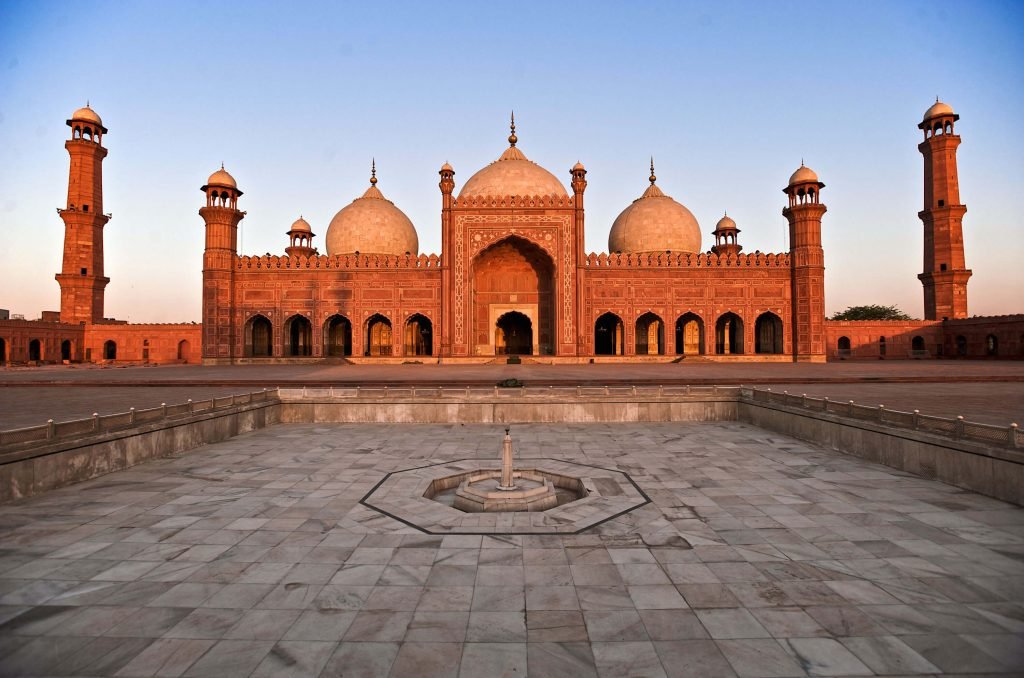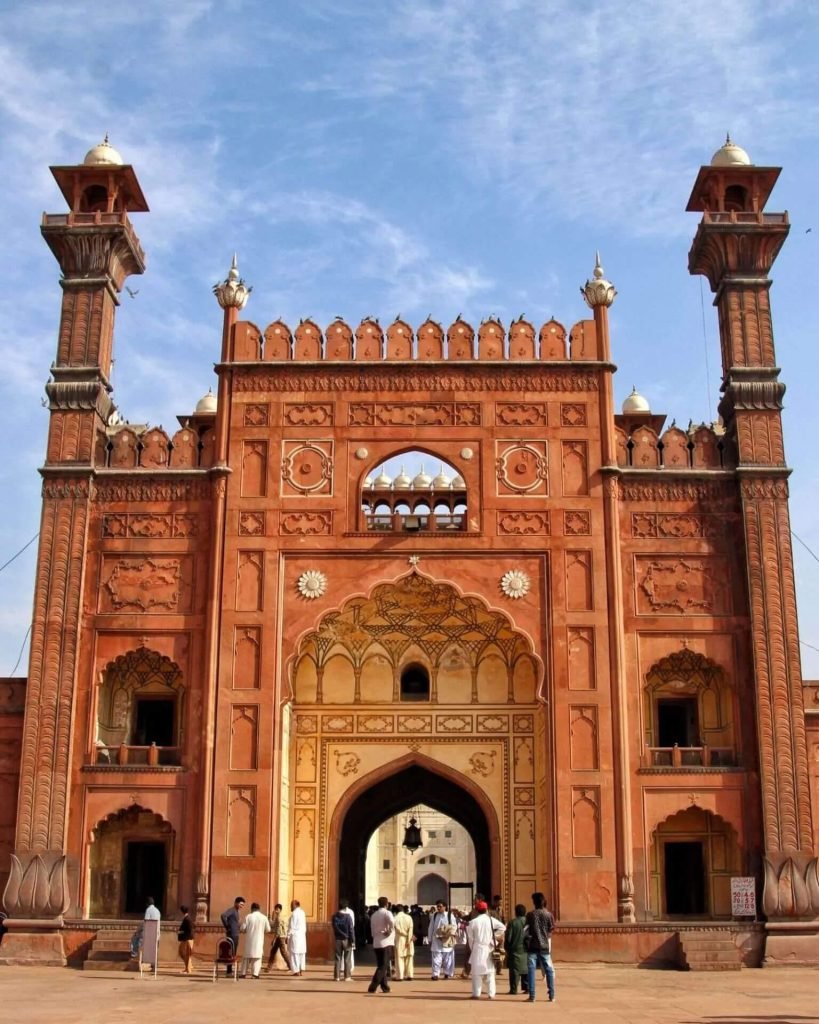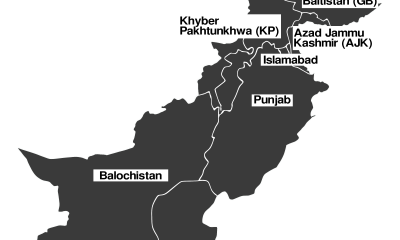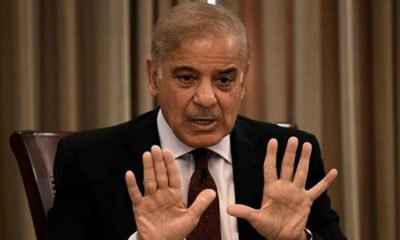Heritage
Badshahi Mosque | Islamic History and Architecture
The Badshahi Mosque (which translates to “The Royal Mosque”) is a Mughal-era mosque in Lahore and is one of its most iconic landmarks.

The Badshahi Mosque (which translates to “The Royal Mosque”) is a Mughal-era mosque in Lahore and is one of its most iconic landmarks. Badshahi Mosque is located on the outskirts of the Walled City of Lahore, west of Lahore Fort, and stands as a testament to the rich history of Islamic and Mughal artistry. The Badshahi mosque holds immense cultural and historical significance, and therefore, it attracts visitors from around the world. Moreover, its stunning architecture has also made it a popular tourist destination.

History
The Badshahi Mosque was built between 1671 and 1673 by the sixth Mughal emperor, Aurangzeb Alamgir, and was the biggest mosque in the world at the time until 1986. Its construction was supervised by Aurangzeb’s brother-in-law and the governor of Lahore, Muzaffar Hussain (also known as Fidai Khan Koka).
The Badshahi mosque is a fine example of Mughal architecture, featuring carved red sandstone on the outside with a marble inlay. Even today, the Badshahi mosque remains the largest mosque of the Mughal era, the second-largest mosque in Pakistan, and the fifth-largest mosque in the world.
The Badshahi mosque was originally planned as a reliquary to safeguard a strand of the Prophet’s hair. As a symbol of its importance, the Badshahi Masjid was built directly across the Lahore Fort’s Alamgiri gate.
The Badshahi Mosque is significantly influenced by the Mughal architectural style, and Aurangzeb, in particular, adopted the style of the Jama Masjid in Delhi, which was constructed by his father, Shah Jehan. Both of these mosques are made of red sandstone with white marble inlay.



Badshahi Mosque under Sikh Rule
On July 7, 1799, the Sikh army under Ranjit Singh took control of Lahore. Following this, Maharaja Ranjit Singh used the vast courtyard of the Badshahi mosque as a stable for his army horses, camels, and other animals. Moreover, its 80 Hujras (study rooms surrounding the courtyard) served as quarters for his soldiers.
In 1818, Ranjit Singh built a marble edifice in the Hazuri Bagh facing the mosque, which was used as his official royal court of audience. The marble slabs for the baradari are alleged to have been stolen from other sites in Lahore. After Ranjit Singh’s death in 1839, his son and successor, Kharak Singh, began the construction of a samadhi in his memory at a site adjacent to the mosque.
During the First Anglo-Sikh War in 1841, Ranjit Singh’s son, Sher Singh, used the mosque’s large minarets for the placement of zamburahs, or light guns, which were used to bombard the supporters of Chand Kaur who had taken refuge in the besieged Lahore Fort. In one of these bombardments, the fort’s Diwan-e-Aam (Hall of Public Audience) was destroyed. However, it was later reconstructed under British rule. During this war, Henri de La Rouche, a French cavalry officer in Sher Singh’s army, also used a tunnel connecting the Badshahi mosque to the Lahore fort to temporarily store gunpowder.
Badshahi Mosque under British Rule
In 1849, the British seized control of Lahore from the Sikh Empire. During the British Raj, the mosque and the adjoining fort continued to be used as a military garrison. The 80 cells built into the walls surrounding its vast courtyard were demolished by the British after the War of Independence of 1857 to prevent them from being used for anti-British activities. The cells were replaced by open arcades known as dalans.
The mosque was being increasingly used as a military garrison, which made Muslims resentful. Thus, in 1852, the British established the Badshahi Mosque Authority to oversee its restoration and re-establishment as a site of Islamic worship. The mosque was gradually repaired under the supervision of the Badshahi Mosque Authority and was officially given back to the Muslim community by the Viceroy of India, John Lawrence.
Following the Amritsar Massacre in April 1919, a crowd of over 30,000 Sikh, Hindu, and Muslim protesters assembled in the mosque’s courtyard. Here, Khalifa Shuja Ud Din, who would later become the Speaker of Punjab’s Provincial Assembly, read a speech by Gandhi.
Although repairs were carried out by the Badshahi Mosque Authority during British rule, it was not until 1939 that extensive repairs began under the oversight of architect Nawab Zen Yar Jang Bahadur. This was made possible after Sikandar Hayat Khan raised funds for this purpose. The repairs continued until 1960 and were completed at a cost of Rs. 4.8 million. As Khan was largely credited with extensive restorations of the mosque, he was buried adjacent to the mosque in the Hazuri Bagh.

Badshahi Mosque in the post-independence period
Since Pakistan’s independence in August 1947, the Badshahi Mosque has been a popular spot during the Islamic festivals of Ramadan and Eid. On February 22, 1974, during the 2nd Islamic Summit, thirty-nine heads of Muslim states offered their Friday prayers at the Badshahi Mosque in Lahore. These included Zulfiqar Ali Bhutto, Shah Faisal, Muammar Gaddafi, Yasser Arafat, and Sabah III Al-Salim Al-Sabah were among them.
In December 1993, the Badshahi Mosque was added to the list of UNESCO World Heritage Sites. In 2008, replacement work on the red sandstone tiles on the mosque’s large courtyard began, using red sandstone imported from the original Mughal source near Jaipur, in the Indian state of Rajasthan.
The architecture of the Badshahi Mosque
Historically, Lahore’s architectural style has been heavily influenced by Persian architecture. Earlier Lahore mosques, such as the Wazir Khan Mosque, had elaborate Kashi Kari tile work. The Badshahi mosque, on the other hand, deviates from that design. Aurangzeb picked an architectural style identical to that of Delhi’s Jama Mosque. Both of these mosques are made of red sandstone with white marble inlay, which is different from the conventional mosque designs in Lahore, which are made of elaborate tile work.
The gate has multiple chambers that are not open to the public. One of the rooms is reported to have a strand of hair from the Prophet Muhammad (peace be upon him) and his son-in-law, Ali (R.A.).
As you pass through the entrance, you come across an expansive sandstone-paved courtyard that spreads over 278,000 sq. ft. The courtyard can accommodate up to 100,000 worshippers at a time.
Entrance to the Badshahi Mosque
The entrance to the mosque is through a two-story structure built of red sandstone and decorated with framed and carved panelling. The Badshaahi mosque features a muqarna, a type of decorated vault in Islamic architecture that was first used in Mughal architecture with the construction of the Wazir Khan Mosque.
The mosque’s gateway faces east towards the Alamgiri Gate of the Lahore Fort, which was also commissioned by Aurangzeb. The entrance and mosque are situated on an ascent—a flight of 22 steps at the mosque’s main gate. The gateway itself contains several chambers that are not accessible to the public.
The prominence of the masjid in the imperial vision was such that it was constructed just a few meters to the west of Lahore Fort. A special gate facing the mosque was added to the fort. The space in between—the Hazuri Bagh—was used as a parade ground where Aurangzeb would review his troops and courtiers. The Hazuri Bagh appears to be at a lower level than the mosque since the latter was built on a six-meter plinth to help prevent flooding.
Courtyard
After passing through the massive gate, an expansive sandstone-paved courtyard spreads over an area of 278,000 sq. ft., which can accommodate 100,000 worshipers. The courtyard is enclosed by single-aisled arcades.

Prayer hall
The main edifice at the site was also built from red sandstone and is decorated with white marble inlay. The prayer chamber has a central arched niche with five niches flanking it that are about one-third the size of the central niche. The Badshahi Masjid has three marble domes, the largest of which is located in the centre of the mosque and is flanked by two smaller domes.
Both the interior and exterior of the Badshahi mosque are decorated with elaborate white marble, carved with a floral design that is common to Mughal art. The carvings at Badshahi Mosque are considered quite fine and are unsurpassed works of Mughal architecture. The chambers on each side of the main chamber contain rooms that were used for religious instruction. The inside prayer hall can accommodate approximately 10,000 worshippers at a time.
Minarets
At each of the four corners of the mosque, there are octagonal, three-story minarets made of red sandstone. The minarets are about 60 meters tall, with an outer circumference of 67 feet and an inner circumference of eight and a half feet. Each minaret is topped by a marble canopy. The main building of the mosque also features an additional four smaller minarets at each corner of the mosque.
















